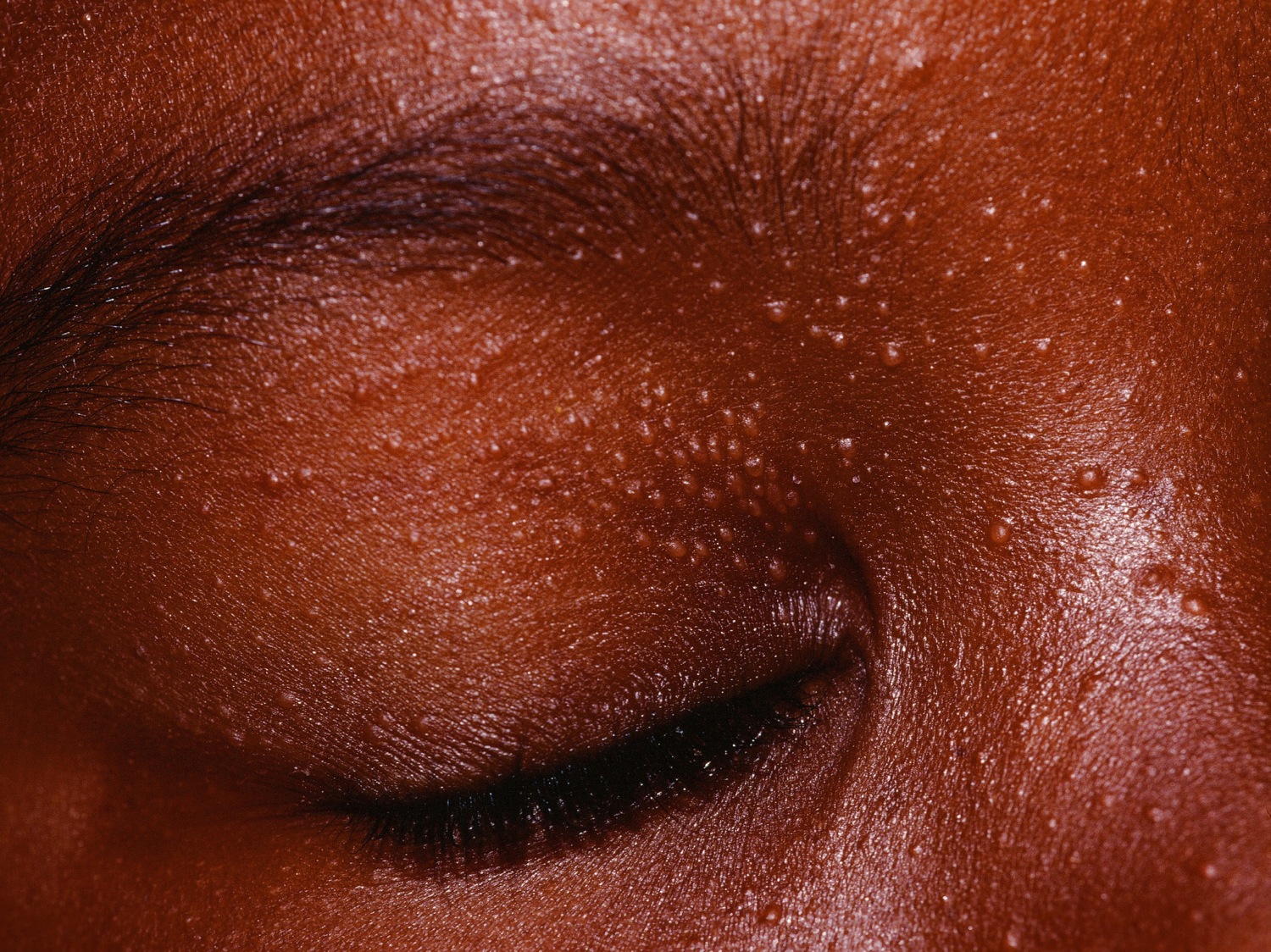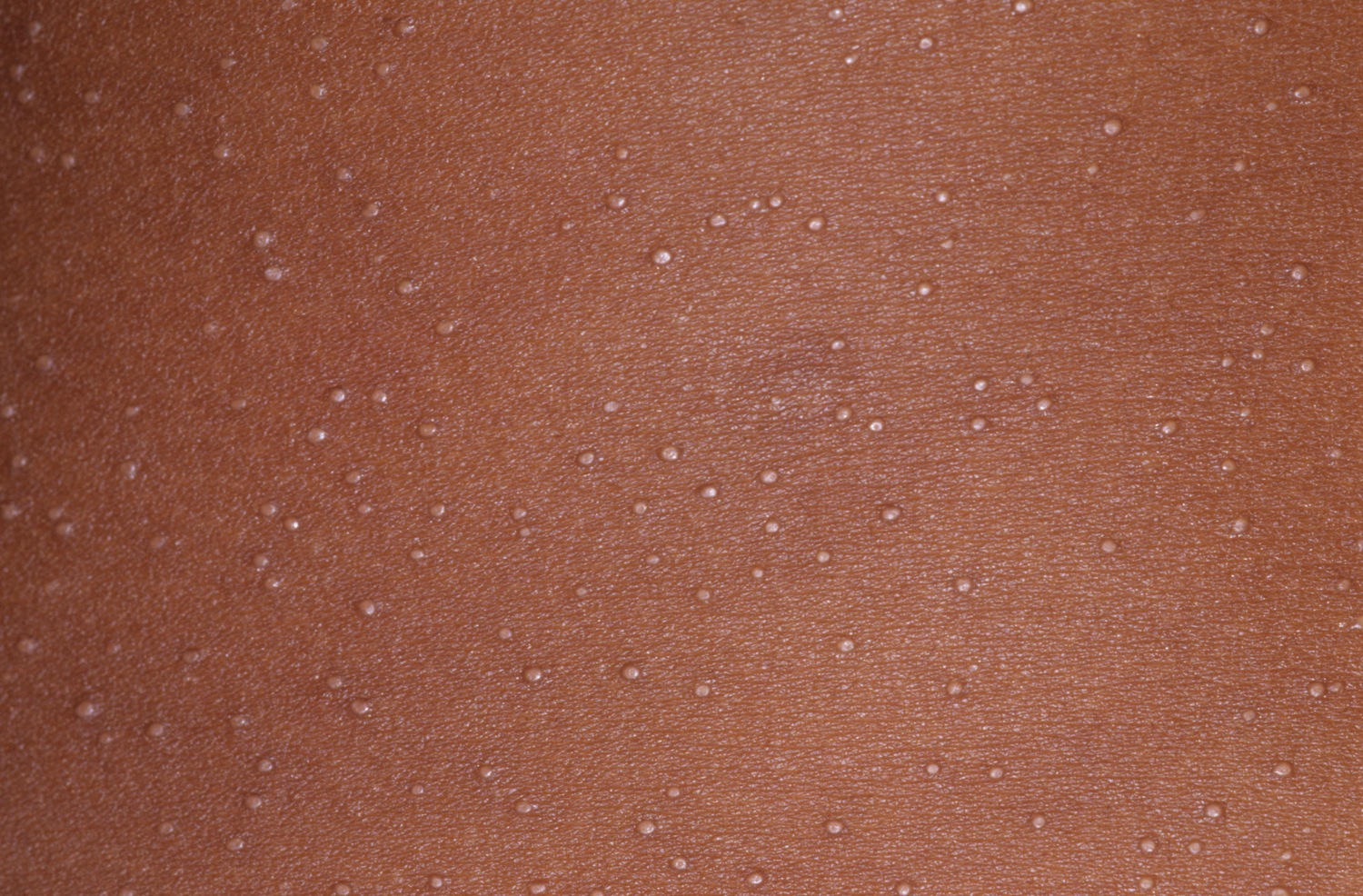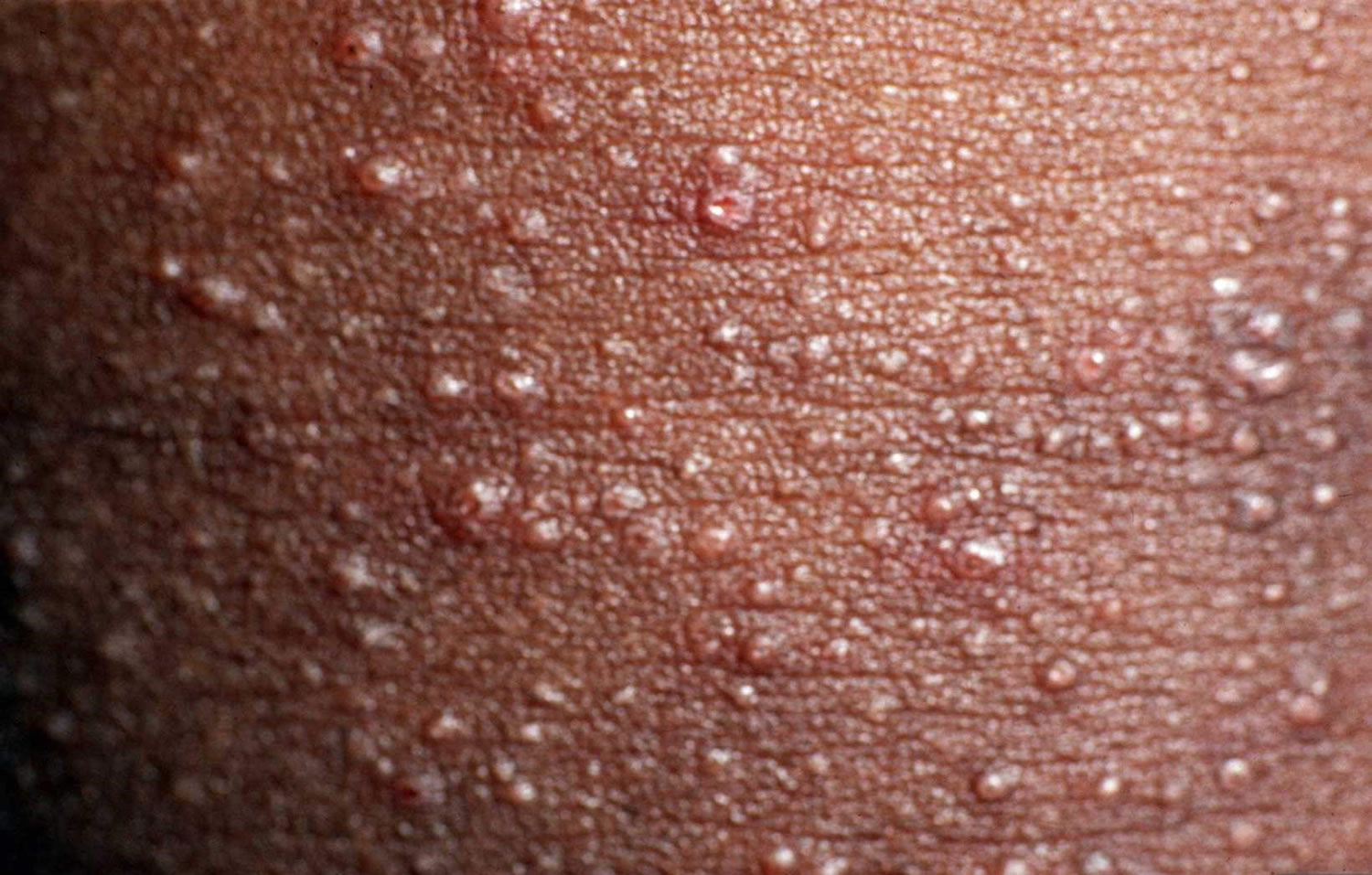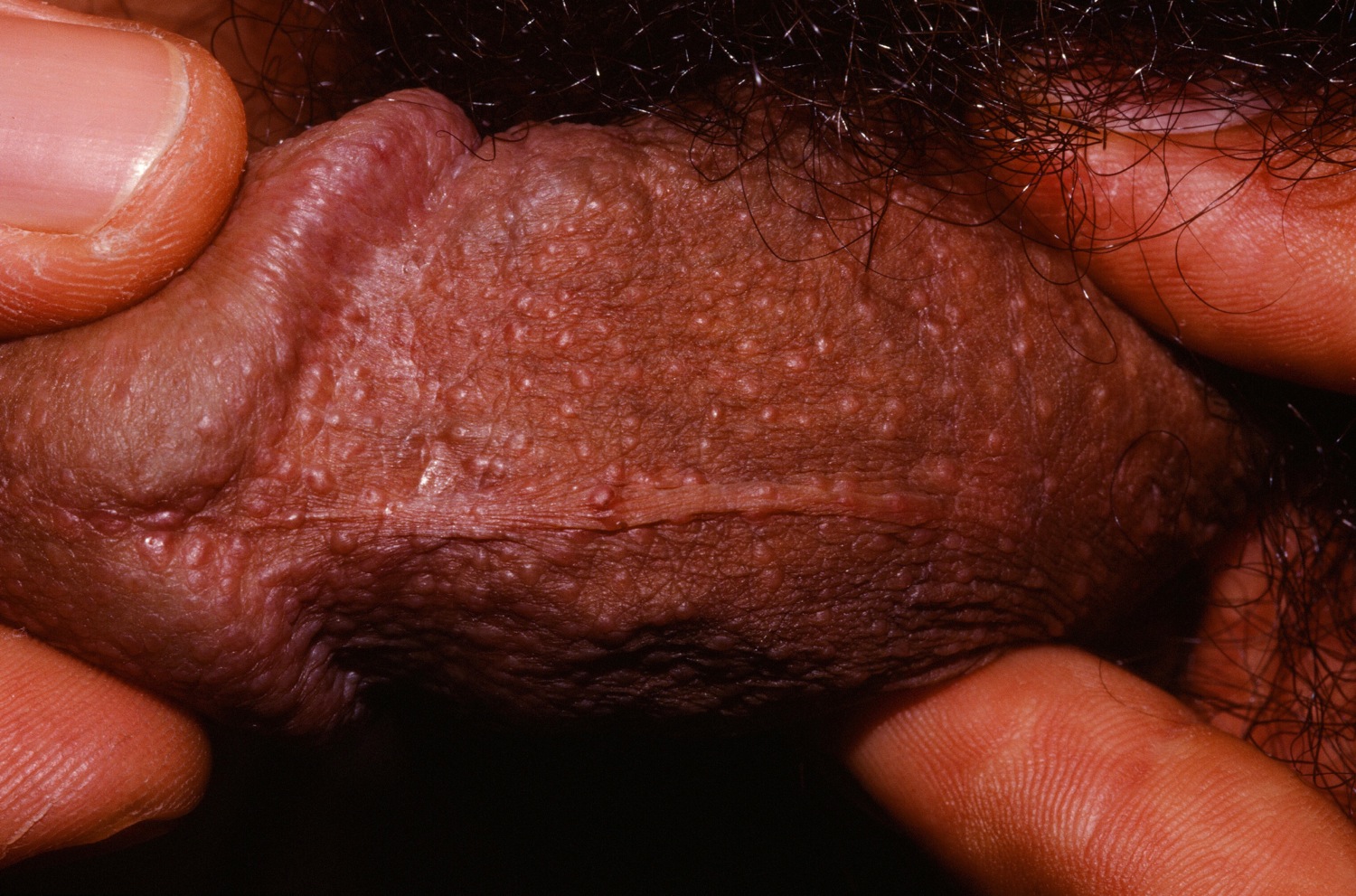Contents
What is lichen nitidus
Lichen nitidus is a rare inflammatory skin condition that usually presents with tiny skin-colored glistening bumps on the surface of your skin. Although it has been considered a variant of lichen planus, lichen nitidus is now believed to be a separate and distinct entity. Although lichen nitidus may affect anyone, lichen nitidus usually begins in childhood, particularly preschool and school-aged children, or in young adult life. It affects both sexes equally and occurs in all races.
Lichen nitidus results from abnormal inflammatory activity in skin cells, but the cause of inflammation is unknown.
Lichen nitidus rarely causes discomfort and usually clears up on its own without treatment.
Lichen nitidus is a harmless condition that doesn’t result in long-term skin problems or medical complications. However, the appearance of lichen nitidus may cause a person to be self-conscious or embarrassed.
Lichen nitidus doesn’t increase your risk of skin cancer, and it isn’t an infectious disease that can spread to other people.
Reported clinical variants of lichen nitidus include:
- Generalized lichen nitidus
- Hemorrhagic/purpuric lichen nitidus: the generalised purpuric form begins on tops of feet and around the ankles before progressing up the legs and becoming generalised over months. A palmar purpuric form may show accentuation at sites of mechanical stress
- Vesicular (blistering) lichen nitidus affects the palms and resembles pompholyx
- Actinic lichen nitidus appears on sun-exposed sites usually in dark-skinned patients and tends to be seasonal, recurring in summer
- Linear lichen nitidus – papules arise in a line
- A keratoderma form of lichen nitidus affects palms and soles, resembling chronic eczema with fissuring
- Perforating lichen nitidus is mostly reported on hands and forearms; it has umbilicated papules
No treatment is needed for lichen nitidus.
For most people, lichen nitidus lasts for a few months to a year. The condition usually clears up on its own without treatment. After it clears up, the appearance of the skin is usually normal with no scarring or permanent change to skin color.
If lichen nitidus causes itching or if you have concerns about your appearance or your child’s appearance, your doctor may prescribe a medium to high potency topical steroid. Tacrolimus has been beneficial. Other treatments for widespread involvement have included sunlight, narrowband UVB, PUVA, acitretin and observation.
Figure 1. Lichen nitidus
Figure 2. Lichen nitidus (close up view)
Figure 3. Lichen nitidus Köbner phenomenon
Figure 4. Lichen nitidus penis
Lichen nitidus causes
The cause of lichen nitidus is unknown. The papules that appear are the result of inflammation controlled by white blood cells called T lymphocytes. Normally, these cells work to heal disease or injury, such as a cut on your finger. Doctors and researchers don’t know what prompts T lymphocytes to be activated in lichen nitidus.
Lichen nitidus has been reported in association with:
- Lichen planus
- Crohn’s disease
- Down syndrome
- Atopic dermatitis
- HIV infection
- Juvenile chronic arthritis
- Congenital megacolon
Lichen nitidus is sometimes familial.
Risk factors for lichen nitidus
Lichen nitidus seems to be more likely to develop in children and young adults.
Association with other diseases
Because lichen nitidus is rare, most information about the disorder is known from individual cases or small studies. Links between lichen nitidus and other diseases aren’t well-understood, but they may include:
- Lichen planus, an inflammatory condition usually characterized by patches of red or purple, flat-topped, itchy bumps on the skin or lacy white patches on the mucous membranes of the mouth
- Atopic dermatitis (eczema), an inflammatory skin condition usually characterized by dry, itchy rashes on the face, inside the elbow, behind the knees, and on the hands and feet
- Crohn’s disease, inflammation of the lining of your digestive tract, which can lead to abdominal pain, severe diarrhea and malnutrition
- Juvenile rheumatoid arthritis, an inflammatory disease that causes persistent joint pain, swelling and stiffness
- Tuberculosis, an infectious disease that most often affects the lungs
Lichen nitidus symptoms
Lichen nitidus appears as clusters of tiny, glistening bumps (papules). Characteristics of the bumps include the following:
- Size. The bumps range in size from pinpoint to pinhead size.
- Shape. They are flat topped and round.
- Color. Bumps are usually the same color as your skin. They may be slightly pink on people with lighter skin, or lighter than normal skin color on people with darker skin.
- Location. Lichen nitidus bumps commonly occur on the chest, abdomen, arms and genital areas, including the penis. They rarely occur on the palms, soles of the feet or fingernails. Lichen nitidus may clear up at one site on your body but then appear at another.
- Itch. In rare cases, the bumps of lichen nitidus may itch, sometimes intensely. They may appear in a line where there’s a scratch, crease or constant pressure on the skin, such as a fold of skin on the abdomen or the crease of skin on the inside of the elbow or wrist.
Typically lichen nitidus presents as a localized bumpy skin eruption involving the flexor aspects of the forearms, backs of hands, the penis, chest, abdomen and buttocks, although any site can be involved including the face.
The papules (bumps) have the following characteristics:
- pinpoint to pinhead size – 1-2mm diameter
- round or polygonal shape
- skin coloured, less commonly yellow, red-brown or violet
- hypo- or hyperpigmented in dark skinned patients
- flat-topped
- shiny
- scaly
- rarely, tiny blisters (vesicles)
- rarely, a central depression (umbilication)
- clustered in groups, which can become confluent to form plaques
- often found over elbows and knees so they may resemble psoriasis
- localized or rarely generalized
- usually asymptomatic but they can be itchy
The Köbner or isomorphic phenomenon is common, appearing as lichen nitidus papules arranged in a line along scratch mark sites (see Figure 3 above).
The palms and soles may be affected. This may be unilateral or bilateral, localised or in combination with lesions in more typical sites. Lichen nitidus confined to the palms seems to affect an older age group (age range 37-52 years) and tends to be very persistent.
Lichen nitidus can involve the lining of the mouth, perhaps more commonly than is reported. The clinical features in this location are:
- Tiny grey-white flat papules inside the cheeks (buccal mucosa)
- White plaques on the tongue and hard palate
- May resemble oral lichen planus
Changes in the nails are seen in approximately 10%, particularly in adults. These may include:
- Pitting
- Longitudinal linear ridging
- Splitting of the free nail edge
- Rippling
- Redness of the proximal nailfold
Lichen nitidus diagnosis
Although the clinical presentation will suggest the diagnosis, lichen nitidus usually requires a skin biopsy to be confirmed. The histology of lichen nitidus is very typical and described as the ‘claw and ball’ appearance:
- Focal dense lymphohistiocytic infiltrate in the upper dermis very close to the epidermis.
- Langhans giant cells are often present in the infiltrate.
- Rete ridges of the epidermis are elongated and ‘clutch’ the infiltrate.
- Red blood cells are seen just under the epidermis in the hemorrhagic/purpuric form.
- Eosinophilic dermal material with some cell nuclei may be seen within the epidermis in the perforating variant.
Lichen nitidus treatment
Usually no treatment is required, as lichen nitidus does not usually cause any symptoms and resolves within 12 months in two-thirds of cases. Post-inflammatory hyperpigmentation can persist for months, or in some cases, for years.
Treatment may be requested by patients with:
- itch
- generalized rash
- involvement of cosmetically sensitive sites
- prolonged course
Treatments reported to have given some relief and/or resolution include:
- Light: including sunlight, narrowband UVB phototherapy and photochemotherapy (PUVA)
- Topical corticosteroids
- Topical calcineurin inhibitors (tacrolimus and pimecrolimus)
- Contact sensitisation with DNCB or diphencyprone
In severe cases, systemic treatments may be considered, including:
- Corticosteroids
- Ciclosporin
- Retinoids – acitretin
- Astemizole (antihistamine, a selective H1 antagonist)
- Itraconazole
- Isoniazid (antibiotic often used to treat tuberculosis)
Corticosteroids may reduce inflammation associated with lichen nitidus. The side effects vary depending on whether it’s used as an ointment applied directly to the skin (topical) or taken as a pill (oral). Long-term use of topical corticosteroids can cause thinning of the skin, a lessening of the treatment effect and other skin problems. Long-term use of oral corticosteroids can cause weakening of the bones (osteoporosis), diabetes, high blood pressure and high cholesterol levels.
Retinoid is a synthetic version of vitamin A that can be a topical or oral treatment. The topical treatment doesn’t cause the side effects associated with corticosteroids, but it may irritate the skin. Because retinoid can cause birth defects, it shouldn’t be used by women who are pregnant or who might become pregnant. Your doctor can advise you on necessary precautions.
Other topical medications. A topical drug called tacrolimus (Protopic) helps to suppress the immune response and may be helpful for lichen nitidus. Possible side effects include stinging, burning and itching at the site where the medication is applied. This medication can’t be used in conjunction with phototherapy. Limit sun exposure while using tacrolimus and don’t use tanning beds during treatment.
Antihistamines act against a protein called histamine that is involved in inflammatory activity. An oral or topical antihistamine may relieve itching associated with lichen nitidus.
Phototherapy, a type of light therapy, may help clear up lichen nitidus. One type uses ultraviolet A (UVA) light, which penetrates deep into the skin. This therapy is usually used in combination with a drug that makes the skin more sensitive to UVA light. Another type uses narrow band ultraviolet B (UVB) light. It’s important to avoid sun exposure for a couple of days after having phototherapy. Also, you need to wear special UV-absorbing sunglasses for a couple of days to protect your eyes.










